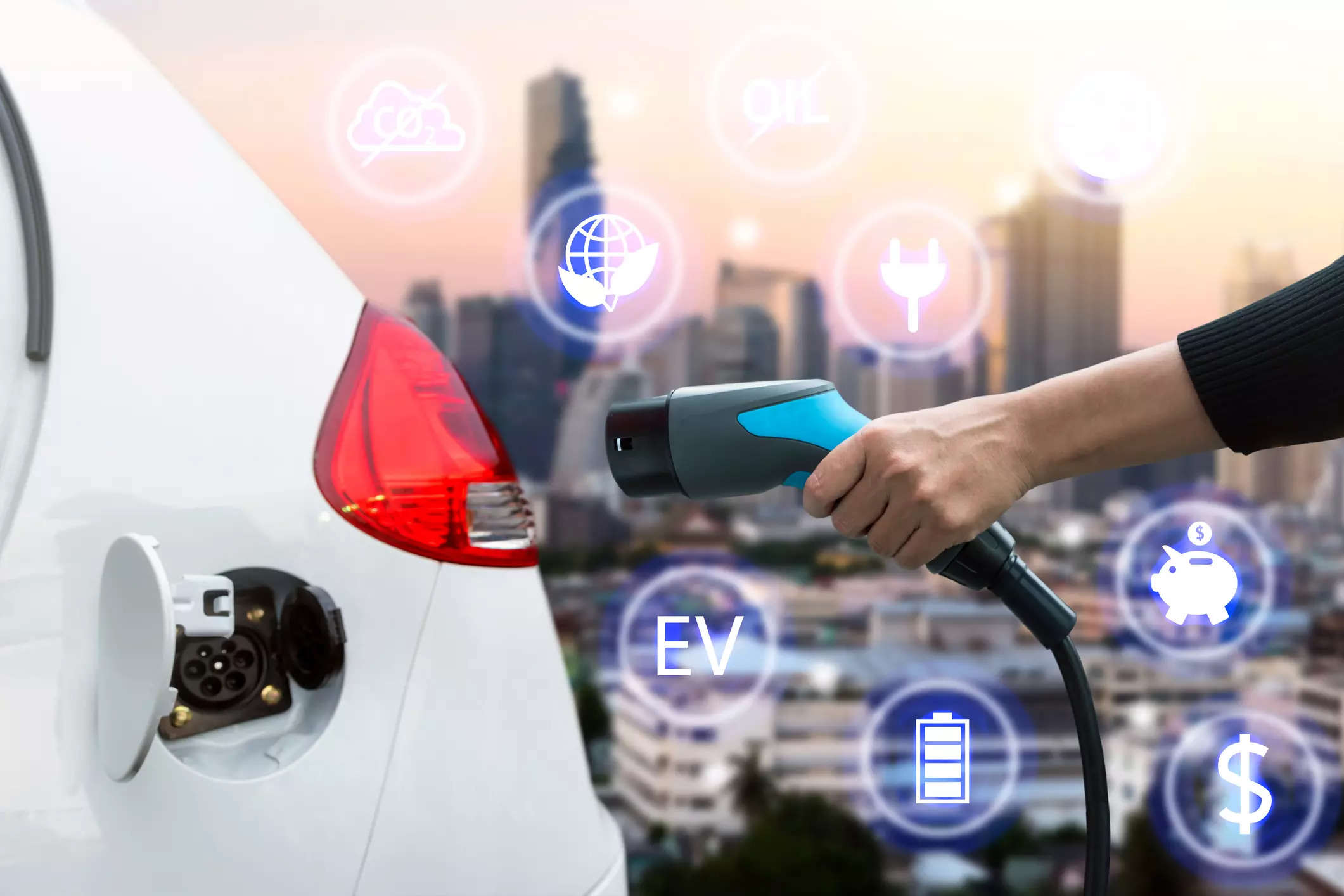
By Shamsher Dewan and Vinutaa S
The global electric vehicle (EV) industry has evolved over the last decade led by China and followed by other major automobile markets. In 2020, the EU emerged as a key growth driver by selling 1.3 million EVs, supported by various government incentives and tighter emission norms. Globally EV sales are estimated to be 3.2 million exceeding 5% share in the overall automobile segment.
China leads the group, in the number of EVs and model variants (over 200), developed vendor ecosystem, charging infrastructure and battery cell manufacturing capabilities. These offer economies of scale benefits and make prices affordable compared to other markets.
India, however, lags in EV penetration, compared to other larger markets. Much needs to be done on the number of models, charging infrastructure, developing the vendor ecosystem and in providing financial incentives. The country has a negligible share in EVs, even though it is the largest 2W and 3W market globally and among the top five in commercial vehicles (CV) and passenger cars. Further e-2Ws, e-3Ws and e-buses find more demand than trucks and cars in the domestic market. The scope for growth is encouraging in the electric two and three-wheeler segment, followed by the electric buses owing to favourable total cost of ownership (TCO) and huge volumes, which offer benefits of economies of scale.

Incentives, policy support
The Central and state governments have taken several policy initiatives in recent years to encourage and accelerate transition to EVs. These include the Alternate Fuel for Surface Transport Program (AFSTP) in 2010-12; the National Electric Mobility Mission Plan 2020 (NEMMP) in 2013; FAME-I scheme in 2015-18 and FAME-II in 2019-24; and the PLI Scheme. More importantly, the FAME-II Scheme, which was notified in April 2019 and had a subsequent amendment in June 2021, has a total outlay of INR 10,000 crore. It provides demand incentives to the buyer at INR 15,000 per kWh, up from INR 10,000 per kWh for 2W, with the cap being doubled to 40% of the vehicle cost as part of the June 2021 amendment.
This has helped reduce the price differential between conventional 2W and e2W from 12% to 22% for the base models (approximately INR 8,000-9,000) and by 10-12% for premium models (~INR 15,000).
The TCO has declined by 6-8% due to the demand subsidy increase, arising from the lower upfront cost. With the recent amendments, the pay-back period on incremental cost of buying an e2W also has reduced to 3 years from 4 years earlier. The FAME-II scheme has also targeted demand growth of three lakhs e-3Ws and e-buses (in nine large cities).
The Production-Linked Incentive (PLI) aims to boost localised manufacturing and incentivise companies in auto, auto components and ACC batteries. With an outlay of INR 25,938 crore in auto and auto component, the scheme will benefit India’s automobile sector in many ways. It is expected to bring incremental investments of over INR 42,500 crore and result in an additional production of over INR 2.3 lakh crore. This is apart from the INR 18,100 crore for ACC batteries. The PLI scheme will accelerate investments to a local EV ecosystem and has the potential to make India an export hub in the global auto supply chain.
The Central Government, under the FAME scheme, has subsidised e-buses for mass transportation by giving up to INR 55 lakh subsidy per bus for their purchase. The National Mission on Transformative Mobility and Battery Storage envisages setting up a 5-year Phased Manufacturing Programme (PMP) for development of large-scale, export-competitive, integrated batteries and cell manufacturing giga scale projects in India.
‘Go Electric Campaign’

The ‘Go Electric Campaign’, a Pan-India initiative, aims to spread awareness on the benefits of e-mobility and EV charging infrastructure and boost the confidence of EV manufacturers. It includes tax and other incentives, including lower GST on EVs at 5% as against 28% on conventional vehicles, deducting interest payment of up to INR 1.5 lakh on loans for EVs, allowing 100% FDI in EVs under the automatic route and exempting EVs from the proposed Green tax on petrol and diesel vehicles for registration renewal after 15 years in Budget 2021. The state governments too have proactively formulated EV policies to propel demand in their respective states. Industry players have lined up capital investments for expansion, to meet the growing demand and entered into foreign collaborations for components.
On the other front, there is a serious need to spruce up the charging infrastructure and public charging points. There were 1,800 public charging stations as of March 2021. This was what China added daily last year. Besides, issues like lack of financing options, consumer ignorance about cost-benefit analysis of EVs vs ICE vehicles, shortage of parking space (more vehicles are parked on the road and hence no access to charging) and resale value after useful life of the asset, need to be addressed. Innovative solutions are the need of the hour and as EV volumes grow in India, the need for having a local component manufacturing ecosystem to drive cost efficiency will also play an important role. With batteries accounting for a lion’s share of the overall cost, domestic cell manufacturing will be imperative. However, it may be some time away for India.
EVs have been slowly gaining acceptance (0.64 million EVs have been registered in India since FY12), mainly e-3Ws and e-2Ws. The sales of e-3Ws contracted 20% to 88,372 YoY in FY2021, while e-2W and electric cars grew over 60% YoY. E-2W registration picked up in 8 months in FY22 because of the rising fuel prices and lower ownership cost of e2Ws over ICE. The segment witnessed growth of over 5 times on a YoY basis, and 96,904 e-2Ws were sold in the same period. The penetration of e-buses in India is also gradually picking up, with about 400 units sold in FY21 and approximately 640 units in 8 months in FY22.
The early growth drivers for EV will be the e-2Ws, e-3Ws and e-buses. Electric 2W and 3W segments have relatively lower dependency on commercial charging infrastructure and can adopt battery swapping or portable batteries and e-buses too can be charged at depots. The share of EVs is expected to reach about 8%-10% level in buses and two-wheelers whereas the share in electric three-wheelers could even exceed 30% by 2025 with favourable operating cost metrics.
However, EV penetration in the car and truck segments is likely to remain below 5% in the medium term. Overall, it can be said that the long-term outlook for the EV segment, provided a conducive policy environment and proposed investments in developing related ecosystems, is positive.
(Note: The authors are Shamsher Dewan, Vice President & Group Head – Corporate Ratings, ICRA Limited and Vinutaa S, Assistant Vice President & Sector Head – Corporate Ratings, ICRA Limited. Views are personal)
Also Read:

















